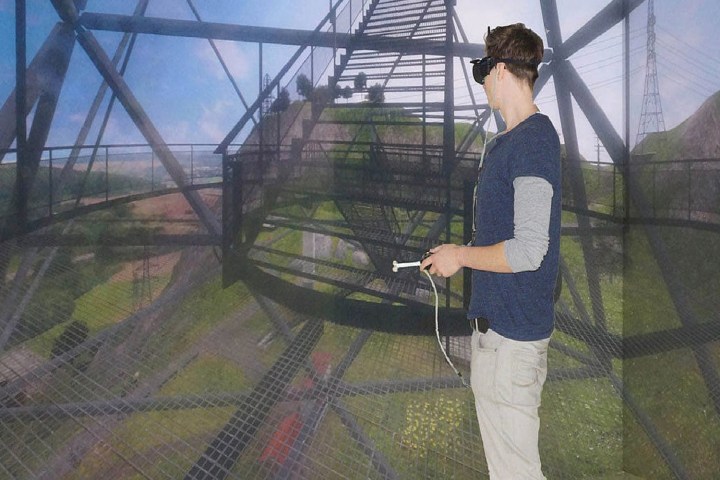
In a new study, 39 participants were recruited, all with a fear of heights. Using VR, they were placed into scenarios in which these fears would usually be provoked. Twenty minutes prior to the experiment, half of the participants had the frontal lobe of their brain stimulated using transcranial magnetic stimulation. This involves a magnetic coil being placed near to the head of the person receiving the treatment. The coil produces a fast-changing magnetic field which sends magnetic pulses through the cranium and into the brain. The other half of the participants were given a pseudo stimulation to act as a placebo.
After two sessions, the group that had been treated using transcranial magnetic stimulation before the VR exposure therapy found that they experienced reduced levels of anxiety. Best of all, the positive effects were still visible three months after the treatment took place.
It’s an exciting demonstration of how this groundbreaking technology can be used to benefit patients. Other researchers have already looked at the impact of virtual reality as a therapeutic tool for allowing patients to face anxieties in a controlled (and highly customizable) environment. This work adds transcranial magnetic stimulation to the mix for what could turn out to be the most powerful tool for addressing phobias yet. Given that some anxiety disorders can be so serious that they can have a debilitating effect on sufferers, research such as this could be life-changing.
Next, the researchers want to expand the study to explore other fears to see whether they can be treated with the same level of success. Their chosen phobia for the next phase is arachnophobia, a fear of spiders.
A research paper describing the work, titled “Medial prefrontal cortex stimulation accelerates therapy response of exposure therapy in acrophobia,” was recently published in the scientific journal Brain Stimulation.
Editors' Recommendations
- We finally might know what Apple will call its AR/VR headset
- Turns out Microsoft’s HoloLens 3 might not be dead after all
- Meta believes VR haptic gloves could unlock the future of the metaverse
- HTC’s leaked Vive Flow headset might offer portable VR
- The best VR headsets for the iPhone


